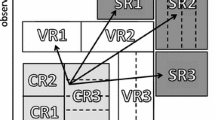
Overview
- Revised third edition with a chapter dedicated to machine learning
- Offers a course-based introduction to statistical analysis for experimental data
- Enriched with many worked-out examples to train the reader
Part of the book series: Lecture Notes in Physics (LNP, volume 1010)
Access this book
Tax calculation will be finalised at checkout
Other ways to access
About this book
This third edition expands on the original material. Large portions of the text have been reviewed and clarified. More emphasis is devoted to machine learning including more modern concepts and examples. This book provides the reader with the main concepts and tools needed to perform statistical analyses of experimental data, in particular in the field of high-energy physics (HEP).
It starts with an introduction to probability theory and basic statistics, mainly intended as a refresher from readers’ advanced undergraduate studies, but also to help them clearly distinguish between the Frequentist and Bayesian approaches and interpretations in subsequent applications. Following, the author discusses Monte Carlo methods with emphasis on techniques like Markov Chain Monte Carlo, and the combination of measurements, introducing the best linear unbiased estimator. More advanced concepts and applications are gradually presented, including unfolding and regularization procedures, culminating in the chapter devoted to discoveries and upper limits.
The reader learns through many applications in HEP where the hypothesis testing plays a major role and calculations of look-elsewhere effect are also presented. Many worked-out examples help newcomers to the field and graduate students alike understand the pitfalls involved in applying theoretical concepts to actual data.
Similar content being viewed by others
Keywords
Table of contents (13 chapters)
-
Front Matter
-
Back Matter
Reviews
Authors and Affiliations
About the author
Luca Lista is full professor at University of Naples Federico II and Director of INFN Naples Unit. He is an experimental particle physicist and member of the CMS collaboration at CERN. He participated in the BABAR experiment at SLAC and L3 experiment at CERN. His main scientific interests are data analysis, statistical methods applied to physics and software development for scientific applications.
Bibliographic Information
Book Title: Statistical Methods for Data Analysis
Book Subtitle: With Applications in Particle Physics
Authors: Luca Lista
Series Title: Lecture Notes in Physics
DOI: https://doi.org/10.1007/978-3-031-19934-9
Publisher: Springer Cham
eBook Packages: Physics and Astronomy, Physics and Astronomy (R0)
Copyright Information: The Editor(s) (if applicable) and The Author(s), under exclusive license to Springer Nature Switzerland AG 2023
Softcover ISBN: 978-3-031-19933-2Published: 27 April 2023
eBook ISBN: 978-3-031-19934-9Published: 26 April 2023
Series ISSN: 0075-8450
Series E-ISSN: 1616-6361
Edition Number: 3
Number of Pages: XXX, 334
Number of Illustrations: 1 b/w illustrations
Topics: Theoretical, Mathematical and Computational Physics, Statistics, general, Particle and Nuclear Physics, Machine Learning



